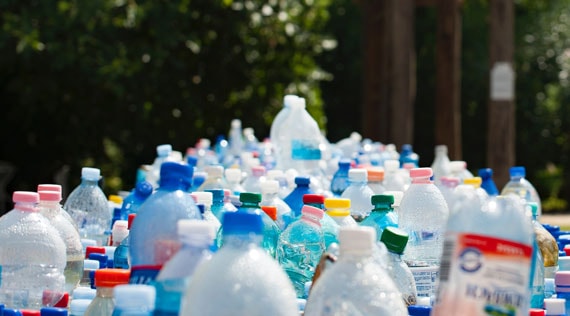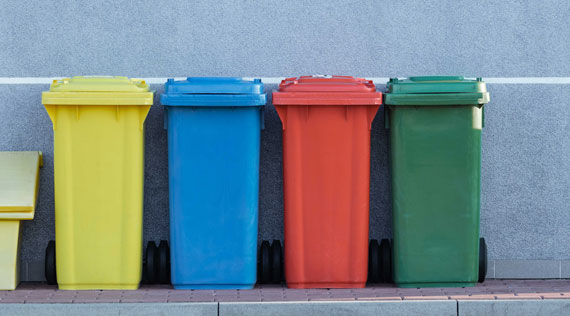As summer fades, many of us can look back on vacations filled with road trips, adventures and landscapes of all sorts. While traveling just before the Labor Day holiday I was greeted on an open highway in Minneapolis by a gigantic billboard emblazoned with, “Plastic Recycling is a Myth.” As someone who spends a significant portion of his time discussing the merits of recycling, having publicly testified about the need to greatly expand recycling in America, I couldn’t help but shake my head. This kind of message is not only inaccurate — it is an untruth that undermines public confidence and consumer participation in the entire U.S. recycling system.
Frustration with a deliberate attempt to spread misinformation aside, this experience turned on a light bulb for me: Aside from curbside bins and the age-old “reduce, reuse, recycle” adage, the average American probably doesn’t really understand how modern recycling works — and is thus vulnerable to agenda-driven critiques. We’ve come a long way from previous eras of exporting too much of our recyclable materials to foreign countries — and sustained innovation and investment in recycling systems can continue to ensure we recover, not waste, useful materials like plastics.
In recent years, recycling industry innovators here in America have leveraged the power of new technologies to optimize and revolutionize modern recycling. Whereas a traditional human sorter in a recycling facility can process 40 pounds of material per hour, something called an “optical sorter” is capable of handling 3,300 pounds per hour. Optical sorter technology combines cameras, sensors, artificial intelligence and even robotic arms to sort material with greater precision and capacity — meaning we can recover more recyclable materials than ever before.
Beyond improving recycling processes for common recyclables, the plastics industry has invested billions of dollars into developing recycling methods for complex materials, like chip bags and foam cups, that complement traditional recycling methods. Often referred to as “advanced recycling” techniques, these methods leverage scientific breakthroughs to break down products into their original building blocks, producing materials that can be used to make everything from car parts to new consumer products and more.
The innovation doesn’t stop here, however. Researchers are working to apply cutting-edge blockchain technology to advanced recycling. A “blockchain” is an impermeable digital record of a product’s history — meaning nobody can change it. Blockchain data for plastics at a polymer level can record details about a plastic product’s manufacture, where and when it was sold, how it was recycled, and which new product it eventually became.
Combining blockchain technology with scannable QR codes, this project would allow future shoppers in store aisles to instantly access data about a recycled product’s history, providing unparalleled traceability and irrefutable accountability for manufacturers and consumer brands.
Even without blockchain’s potential, we are already recycling 4.8 billion of pounds of plastic every year, and that number is only going up. The Association of Plastics Recyclers (APR) shared a report just a few weeks ago showing that recycling rates may not be as low as some would like you to believe. In the same report, APR estimates that plastic waste recycling supports more than 200,000 American jobs, which, doesn’t sound like a myth to me.
An additional study, provided by the U.S. Environmental Protection Agency, found that in a single year, recycling and reuse activities in the United States accounted for 681,000 jobs and $37.8 billion in wages, in addition to $5.5 billion in tax revenues.
In many cases, the biggest impediment to recycling more material is simply getting it into the right receptacle after its use. Imagine yourself finishing up a bottle of soda (that’s “pop” in Minnesota). You recall seeing a billboard proclaiming “Plastic Recycling is a Myth,” so you decide to throw that bottle in the trash instead of a recycling bin, ensuring that the bottle exits the circular economy and ends up in a landfill. All our scientific breakthroughs to recycle more plastic won’t work if the material never makes it to the recycling facility in the first place.
Lacking a full understanding of recycling is one thing; making baseless claims that could encourage unnecessary waste is another. Recycling is real, and beyond being real, it’s exciting. Through education and innovation, we have the potential to craft a truly circular economy where all usable materials, like plastics, are infinitely recycled and repurposed, not wasted. Let’s focus on that future — not one characterized by misinformation.
Matt Seaholm is President and CEO of the Plastics Industry Association (PLASTICS), the only association that supports the entire plastics supply chain, including recyclers.
Courtesy : https://www.twincities.com/2022/09/29/matt-seaholm-no-minneapolis-billboard-plastic-recycling-is-not-a-myth/

